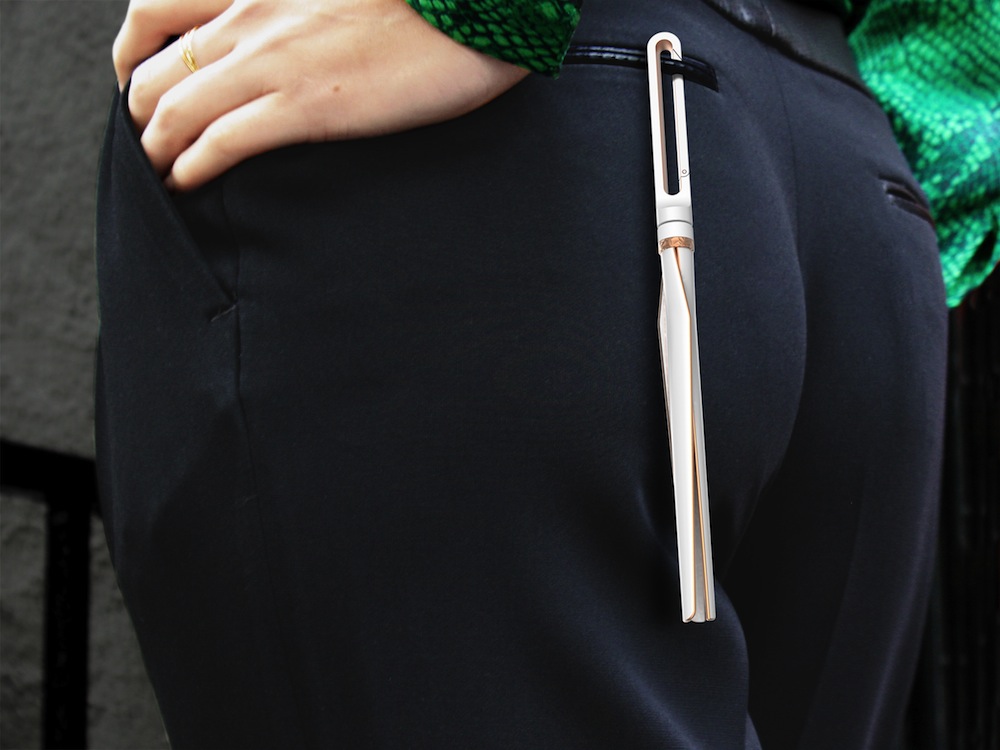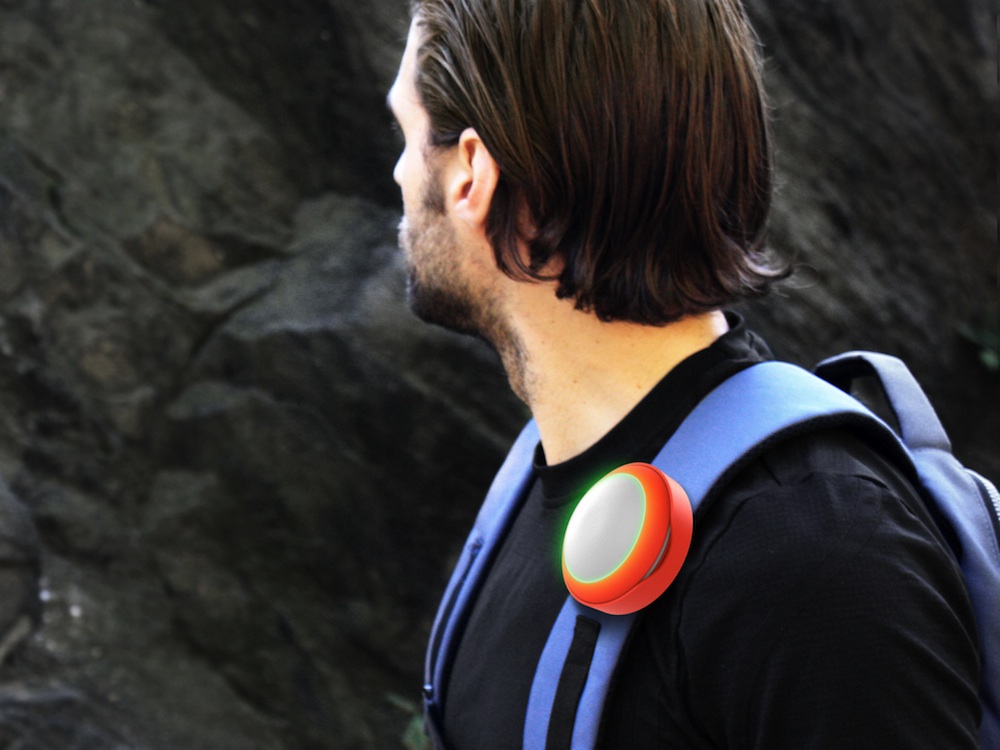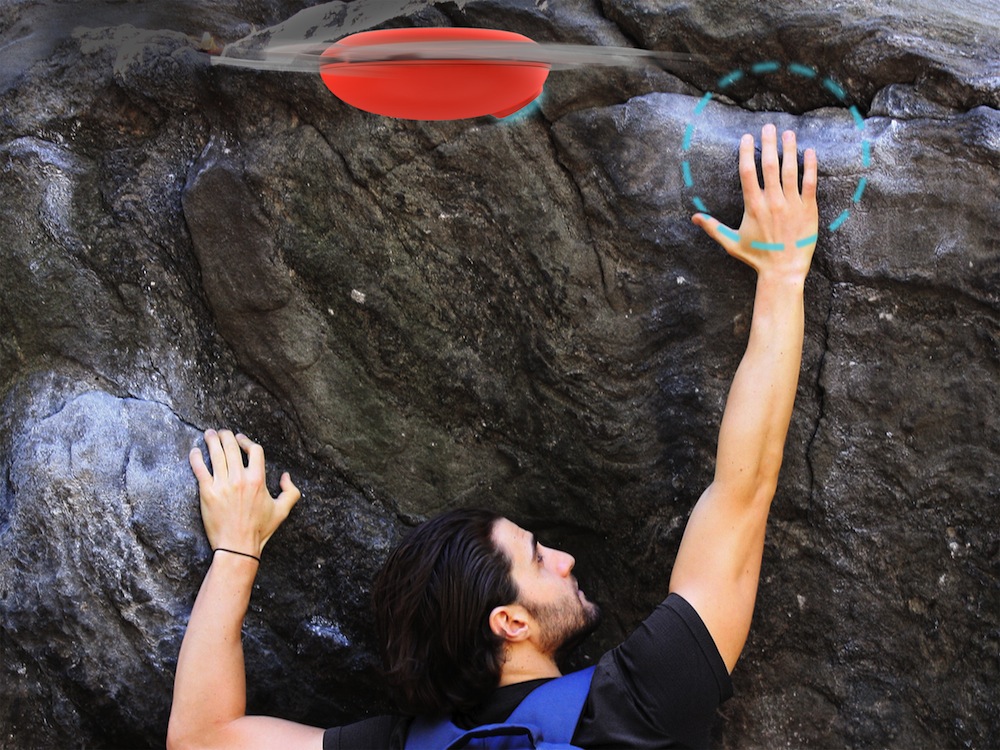Wearable drones may be buzzing on the horizon. As drones become increasingly sophisticated, they will soon take on the roles currently performed by smartphones, tech futurist and designer Adam Pruden argued in a talk at the South by Southwest Interactive Festival on Saturday (March 14). The future may hold wearable drones that interact with users, other people and objects in public space; as the skies fill with drones, they may even get their own superhighways and charging stations to go long distances, he speculated. Pruden and industrial designers at the firm frog tried to envision how these wearable flyers would work, and came up with conceptual designs for four different wearable drones. [Read the full story on the wearable drones]
Breathe
The Breathe is a small plastic drone that sits on the shoulder when not in use. The plastic lung is consantly sensing pollution levels in the immediate vicinity, with air filtering in thanks to a small propeller hidden in the base. (Photo credit: JungSoo Park, frog)
Air filter
When levels of pollution get too high, the propeller launches the drone into the sky, where it flits in front of the user's face and filters pollution form the air that they breathe. (Photo credit: JungSoo Park, frog)
Parasol
The Parasol is a weather drone that normally hooks into a belt or is worn as jewelry. Consistent with its jewelry function, the drone is made of gold. (Photo credit: Jessica Covi, frog)
Get the world’s most fascinating discoveries delivered straight to your inbox.
Flying Umbrella
But the Parasol is more than just a fashion statement. The drone is filled with humidity and temperature sensors that can detect exactly when the weather takes a turn for the worse. If ultraviolet radiation levels get too high or rain is on the way, the drone's propellers launch it upwards and form a large disk that constantly adjusts its position to protect the user from the environment. (Photo credit: Jessica Covi, frog)
Scout
The Scout wearable drone is like a workout budy and playmate in one. The sphere, which is encased in rubber, snaps into a magnetic clip and is also a health monitor. (Photo credit: Reid Schlegel, frog)
Playmate
When a user launches the scout, the propellers expand and the scout can climb up a sheer rock wall, identifying a climbing route that is the perfect challenge for the climber's skill. (Photo credit: Reid Schlegel, frog)
Flare
The flare is essentially a flying tour guide and navigator. The flare is reminiscent of a compass, and is made of metal and glass and clicks into an acrylic wrist strap. (Photo credit: JungSoo Park, frog)
Tour guide
When the user wants to find something, such as a good ice cream shop, he or she simply gives verbal commands, and flicks their wrist to deploy the drone. The drone flies up to scout the environment and hovers a several feet in front of its owner, gudiing the person through a city. (Photo credit: JungSoo Park, frog)
Follow Tia Ghose on Twitter and Google+. Follow Live Science @livescience, Facebook & Google+.

Tia is the editor-in-chief (premium) and was formerly managing editor and senior writer for Live Science. Her work has appeared in Scientific American, Wired.com, Science News and other outlets. She holds a master's degree in bioengineering from the University of Washington, a graduate certificate in science writing from UC Santa Cruz and a bachelor's degree in mechanical engineering from the University of Texas at Austin. Tia was part of a team at the Milwaukee Journal Sentinel that published the Empty Cradles series on preterm births, which won multiple awards, including the 2012 Casey Medal for Meritorious Journalism.










